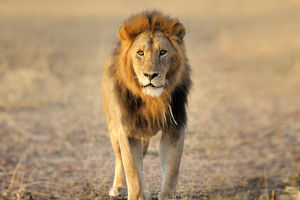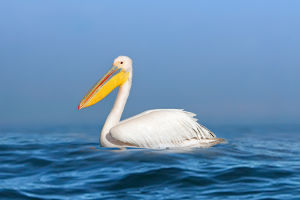The giraffe is a remarkable animal, attracting attention with its unique appearance and behavior.
It is the tallest mammal on land, with adult giraffes typically reaching heights of 4.5 to 6 meters, much of which is due to their long necks.
This long neck allows giraffes to easily feed on the leaves of tall trees, especially their favorite food—the leaves of the acacia tree.
The giraffe's body structure is highly specialized, particularly its cervical vertebrae. Like most mammals, giraffes have seven neck vertebrae, but each one is extremely long.
This neck evolution enables them to access high tree foliage, reducing direct competition with other herbivores. However, the giraffe’s long neck also presents some physiological challenges.
To pump blood to the head, they have a powerful heart that generates much higher blood pressure than most mammals. Additionally, when bending down to drink water, their circulatory system quickly adapts to prevent blood from rushing to the head, which could cause fainting.
On Africa’s vast savannas, giraffes are iconic. They are mainly found in sub-Saharan Africa, living in open grasslands and woodlands.
Thanks to their height and wide field of vision, giraffes often detect predators like lions, leopards, and hyenas early. When danger strikes, adult giraffes can defend themselves with strong hind legs, capable of delivering a deadly blow to predators.
Giraffes also exhibit fascinating social behavior. They usually live in loose groups, with members frequently changing, unlike animals with more stable social structures.
Adult males sometimes engage in a behavior known as “necking”, where they use their necks to fight, swinging them against each other until one concedes. These battles seem slow, but the impact when their necks collide is surprisingly powerful.
Giraffes do not have a fixed breeding season, and the gestation period for females is about 15 months. When calves are born, they are already around 1.8 meters tall and can stand and walk within a few hours, which is crucial for survival in a predator-filled environment.
Young giraffes often form small groups with other calves, watched over by an adult female, to increase their chances of survival.
Although giraffes have relatively few natural predators, they face significant threats from humans. Habitat loss, poaching, and the expansion of human activities have caused a dramatic decline in giraffe populations. Many conservation organizations are working hard to reduce these threats and provide safe habitats for giraffes.
Giraffes are not only visually impressive but also play a unique ecological role. They represent the biodiversity of the African savannas and the complexity of the ecosystem they inhabit.
Giraffes are an important species that deserve protection and study. By understanding and conserving giraffes, humans can contribute to preserving both the species and the balance of the ecosystems they are part of.


